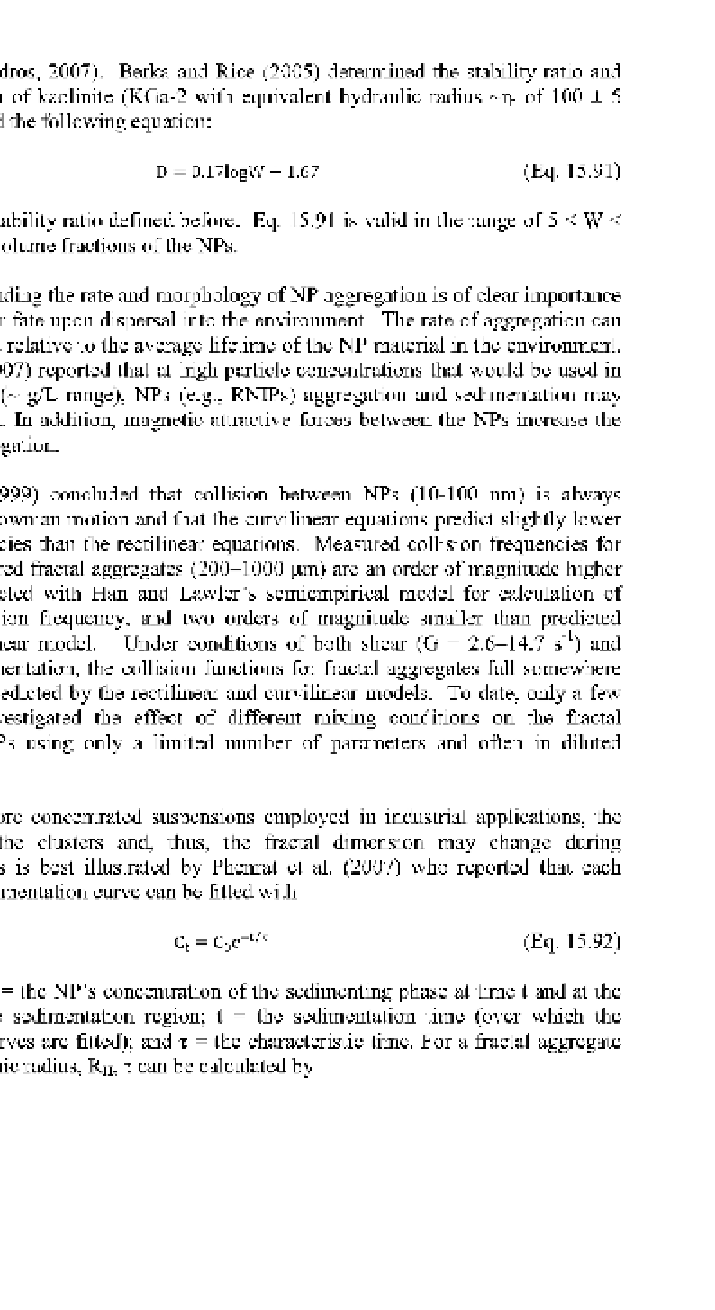Environmental Engineering Reference
In-Depth Information
limiting step (Tadros, 2007). Berka and Rice (2005) determined the stability ratio and
fractal dimension of kaolinite (KGa-2 with equivalent hydraulic radius -rj, of 100 ± 5
nm), and reported the following equation:
D = 0.171ogW+ 1.67
(Eq. 15.91)
where W = the stability ratio defined before. Eq. 15.91 is valid in the range of 5 < W <
100 at very low volume fractions of the NPs.
Understanding the rate and morphology of NP aggregation is of clear importance
in predicting their fate upon dispersal into the environment. The rate of aggregation can
be extremely fast relative to the average lifetime of the NP material in the environment.
Phenrat et al. (2007) reported that at high particle concentrations that would be used in
site remediation (~ g/L range), NPs (e.g., RNIPs) aggregation and sedimentation may
occur in ~ 3 min. In addition, magnetic attractive forces between the NPs increase the
rate of NPs aggregation.
Logan (1999) concluded that collision between NPs (10-100 nm) is always
dominated by Brownian motion and that the curvilinear equations predict slightly lower
collision frequencies than the rectilinear equations. Measured collision frequencies for
settling and sheared fractal aggregates (200-1000 um) are an order of magnitude higher
than those predicted with Han and Lawler's semiempirical model for calculation of
curvilinear collision frequency, and two orders of magnitude smaller than predicted
using the rectilinear model. Under conditions of both shear (G = 2.6-14.7 s"
1
) and
differential sedimentation, the collision functions for fractal aggregates fall somewhere
between those predicted by the rectilinear and curvilinear models. To date, only a few
studies have investigated the effect of different mixing conditions on the fractal
dimension of NPs using only a limited number of parameters and often in diluted
In the more concentrated suspensions employed in industrial applications, the
compaction of the clusters and, thus, the fractal dimension may change during
aggregation. This is best illustrated by Phenrat et al. (2007) who reported that each
region of the sedimentation curve can be fitted with
C
t
= C
0
e-^
(Eq. 15.92)
where C
t
and Co = the NP's concentration of the sedimenting phase at time t and at the
beginning of the sedimentation region; t = the sedimentation time (over which the
sedimentation curves are fitted); and T = the characteristic time. For a fractal aggregate
with hydrodynamic radius, RH, T can be calculated by

Search WWH ::

Custom Search